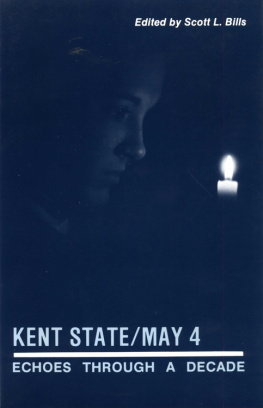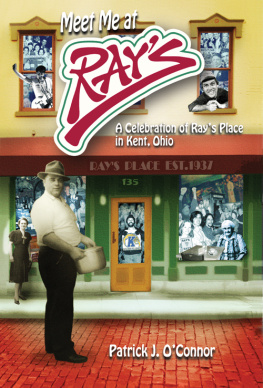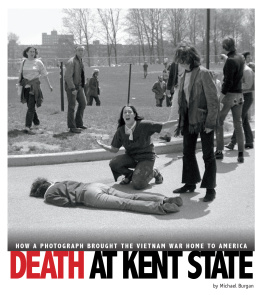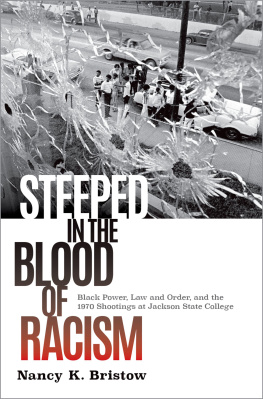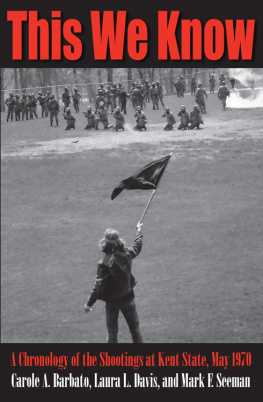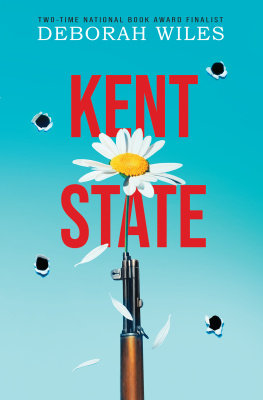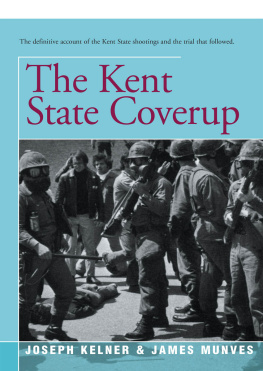Kent State and May 4
KENT STATE
AND MAY 4TH
A Social Science Perspective
THIRD EDITION REVISED AND EXPANDED
Edited by
Thomas R. Hensley
and Jerry M. Lewis
The Kent State
University Press
Kent, Ohio
2010 by The Kent State University Press
All rights reserved
Library of Congress Catalog Card Number 2010006356
ISBN 978-1-60635-048-5
Manufactured in the United States of America
LIBRARY OF CONGRESS CATALOGING-IN-PUBLICATION DATA
Hensley, Thomas R.
Kent State and May 4th: a social science perspective /
edited by Thomas R. Hensley and Jerry M. Lewis.
3rd ed., rev. and expanded.
p. cm.
Includes bibliographical references and index.
ISBN 978-1-60635-048-5 (pbk.: alk. paper)
1. Kent State Shootings, Kent, Ohio, 1970.
I. Lewis, Jerry M. (Jerry Middleton), 1937
II. Title.
LD4191.072H46 2010
378.77137dc20 2010006356
British Library Cataloging-in-Publication data are available.
14 13 12 11 10 5 4 3 2 1
Contents
On May 4, 1970, members of the Ohio National Guard fired into a crowd of protestors at Kent State University, killing four undergraduate students and wounding nine others. This tragic act and its aftermath generated social, legal, and political controversy across the globe. In this volume, we present social science research that provides various perspectives for analyzing the controversy.
All of the authors whose research is presented in this book were members of either the departments of political science or sociology at Kent State University when they undertook their research. They observed or took part in many of the activities reported in this book. Even so, the authors have tried to present factual reports and analyses as objectively as possible.
The third edition of this volume is divided into five sections. The first is an overview of the events of May 14, 1970. This section presents a detailed description and analysis of May 1970 at Kent State University. In addition, three essays review the vast literature and documentaries that have arisen from these events. A final essay seeks to provide answers to the questions most frequently raised regarding the May 4th tragedy. The second section looks at the legal aftermath of the shootings. The third provides a social science perspective on the impact of the shootings. The fourth section examines from several perspectives the gymnasium controversy that erupted on Kent States campus in 1977. The final section deals with memorializing the events of May 4.
We have many people to thank for their support and contributions to this project. We would like to thank the Office of Faculty Development at Kent State for support in the development of a preliminary version of this book. We also wish to thank Nancy Birk of the Kent State Libraries and Media Services and Gary Harwood of University Relations and Marketing for assistance in obtaining the pictures in the book. The photos were taken by Doug Moore and Gary Harwood of Kent State. Kathy Loughry of the Kent State political science department provided excellent secretarial assistance. We also wish to thank the various authors who contributed to this volume. All royalties will be donated to the May 4th Visitors Center at the university.
Students taking cover as the Ohio National Guard fires into the Prentice Hall parking lot on May 4, 1970. Photo by Doug Moore.
The five essays in this section provide an overview of the events associated with May 4, 1970, when four studentsAllison Krause, Jeffrey Miller, Sandra Scheuer, and William Schroederwere killed and nine othersAlan Canfora, John Cleary, Thomas Grace, Dean Kahler, Joseph Lewis, Donald MacKenzie, James Russell, Robert Stamps, and Douglas Wrentmorewere wounded by the Ohio National Guard.
James Best, an emeritus member of Kent State Universitys political science department, describes the events through a secondary analysis of a large number of resources. Written in late 2008, his essay provides the reader with a factual background for looking at the events on the days prior to the shootings, as well as the events of May 4.
Jerry M. Lewis, an emeritus member of Kent States sociology department, reviews, in two essays, books that have been published about May 4, including legal controversies, memorials, childrens books, and novels. This is followed by an essay on television documentaries that focused on May 4.
Lewis and Thomas R. Hensley, a member of Kent States political science department, conclude this section with an essay using many of the sources discussed in the Best and Lewis essays to attempt to identify the historical inaccuracies associated with May 4. Their approach is to raise and provide answers to twelve of the most frequently asked questions about May 4.
In this chapter we present a historical narrative of the events of May 14, 1970, and an analysis of the context in which those events took place, a narrative that serves a number of purposes. For those unfamiliar with what happened in Kent, Ohio, during the period of May 14, the narrative provides a time-ordered description of the major actors and activities, making use of all the major published as well as many unpublished descriptions and analyses of the events, as well as testimony given by the participants during the 1975 civil suit trial. From these sources we reconstruct in sufficient detail the fateful events of those four days.
Because no action occurs in a vacuum, it is important for us to present and analyze the social, historical, and political context in which the shootings took place. We concentrate our efforts on several factors that we consider important: the social context provided by the city of Kent, the historical context of demonstrations on the campus of Kent State University, and the political context provided by the statements and actions of President Richard Nixon and Vice President Spiro Agnew, as well as the Republican primary campaign of Governor James Rhodes.
The Kent State Incident
We have asked a number of questions during this narrative: What factors led to the fatal confrontation between National Guardsmen and demonstrators on Monday, May 4? Why did Kent Mayor Leroy Satrom call for the Ohio National Guard after only one nights disturbances? Why did city and university officials think that the National Guard had complete control of the campus on May 4? Why did Governor James Rhodes make a speech on Sunday morning, May 3, which served to inflame the emotions of many who heard or read about it? Were radicals involved in the events of May 14? How did townspeople and students react to the shootings? What impact did the shootings have on the larger society in which they occurred?
In reconstructing these events we have had to choose which sources to use and, when sources conflicted, which sources to believe. Extensive use has been made of two major worksJames Micheners


